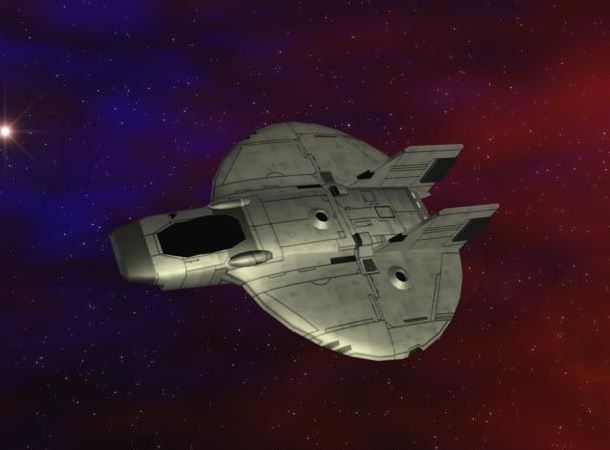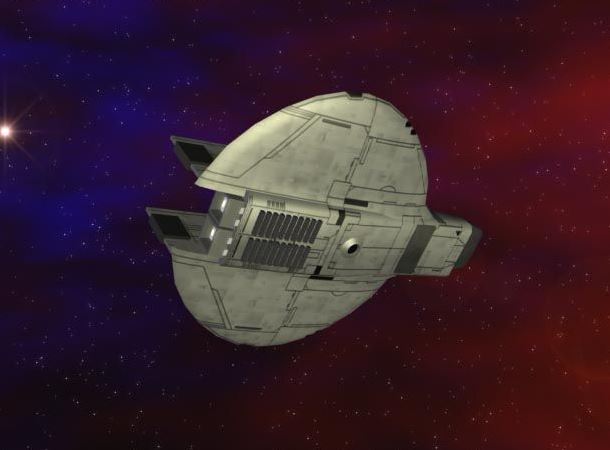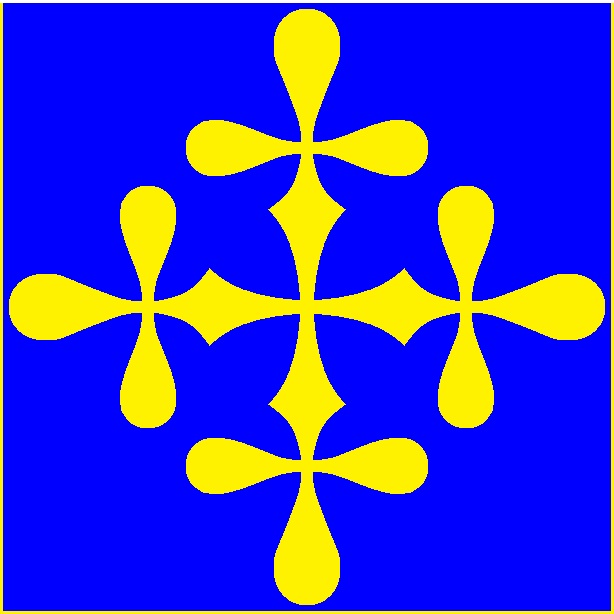| ASF-21 Sholagar Fighter: |
|---|
 | | Dorsal View |
|---|
 | | Ventral View |
|---|
| Top Speeds: | - Space: Mach 30.
- Atmospheric: Mach 10.
|
|---|
| Length: | 29.71 feet (9.05 meters). |
|---|
| Height: | 13.2 feet (4.02 meters). |
|---|
| Span: | 19.54 feet (5.95 meters). |
|---|
| Weight: | 14.2 tons (12848.8 kg). |
|---|
| Power/Drive Systems: | Twin Shinobi 280 Fusion Reactors. |
|---|
| Weapons Systems: | - Twin L-19 Rail Launchers (2);
- Twin Rear Laser Cannons;
- Missile bay.
|
|---|
The UGC has been running on the same aero-space frames for so long, nobody really remembers how they came into original service; Those old enough to remember are all long retired, and most of them aren't qualified to discuss the hows in any case.Therefore, the decision was made to hold a competition for a new breed of true aero-space superiority fighter, a dog fighter capable of reaching orbit on its own, slugging it out it orbit and in an atmosphere.Many contestants entered the ring, but a dark horse presented by Mangon Aeronautics' Sholagar Team, based slightly on design theories presented in the A.S.6/Me-600 Bussard (for which Mangon had a license).No one expected this design to get far; It was thought to be underpowered, underarmed, and unstable in flight (the original Terran designed Bussards had experienced flight dynamic performance issues with inexperienced pilots). So it surprised everyone when the first test, a simple surface-to-orbit timed race, produced a dramatic win for the Sholagar team; With a 1,000 FPS climb rate, it won that match hands down, the nearest competition coming in at just over 800 FPS.In the next heat was basic weapons systems; Get the weaps to actually hit a target. An easy task, until you actually do it; Half the competitors actually fell out at this stage due to an inability to reliably hit the target, a decommissioned ALLIANCE-Class Corvette. There was some controversy about this test, as the ship in question was set to roll, but did so in an unreliable fashion; Nevertheless, the Sholagar team's entry managed a 100% hit rate.In each of the other 5 bouts, the Sholagar team did very well indeed; The last match was a simulated dogfight, by which point the field had been narrowed down to 5 entries. In a round robin, the Sholagar won 3 matches, the leader of the pack, but didn't do as well against older, established designs, mainly the F-18 Hornet, in which it won 2 of 5 matches. The discus wings also showed their vulnerability in the air dogfighting arena, as the fighter literally unrecoverably tumbled in one match on a 28 degree tilt/18 degree yaw bank. The Sholagar team was thought to be out of the race entirely at that point, but managed to correct the issue by the next morning, and reentered the competition.With the Sholagar team having shown their plane could meet the needs of the REF, the last battle was money; There were still 4 other planes with similar characteristics, including another discus design, and plenty of room for one or another to win. The Sholagar team pulled out ahead on a 20 billion credit bid for 100,000 units, wth the option to renew (the other competitors would not stipulate to a renewal option, thus clinching it for the Sholagar team).The craft, dubbed the Sholagar, has been in service now only a decade, but is expected to remain for centuries to come; With a surprisingly good mix of armor, powerplant, and weapons, it has already shown it's worth, as only two were sortied against a Tiresian AZASHAR-Class General Purpose Vessel (better known as a Tiriesian Mothership), and successfully forced her to disengage (unfortunately, long before a Spacy or Patrol ship could come to force her to heave to).Capabilities.The Sholagar has an impressive amount of armor on its hull and a heavier than expected weapons load, it can outpace most anything else in the UGC's current inventory.The original V-Set tail assembly on the Sholagar was revealed to be unstable under certain conditions; This flaw was quickly corrected, and the design has performed admirably since then.Weapons Systems.The Sholagar is armed with a twin set of L-19 MRM Rail Launchers and a single aft-facing light laser; The light laser is not sufficient to destroy a pursuer, but can give them a nasty sting that will degrade their ability to maintain a lock.Powerplant and Drive System.A pair of Shinobi 280 Fusion Reactors provide both power and drive. The nominal output is 25,000 KWH; This is slightly less than what was expected, but has proven fully effective to the surprise of many.Flight Systems.The Sholagar uses standard grav pod technology, but the wings are fully aero-dynamic, and may pilots prefer to take off and land on this whenever possible (they feel it's a smoother ride).A distinct oddity for grav pod equipped aero-space craft is that the ASF-21 is equipped with standard wheels on the landing struts, not landing pads. The wheels can be removed and replaced with pads, but then the landing gear bay hatches have to be removed (the pads serve as the hatches); This is strictly used on ice worlds (the pads aren't even suitable for use on desert worlds). Even if grav pods are used to taxi, the wheels are still used. In theory this means the Sholagar could be used as a light tank on ice worlds, though the practicality of such a option is extremely dubious (as was proven out in Exercise 68, when the theory was tested, though under constraints that left the Blue Force commander livid).FTL Systems.The Sholagar is equipped with the smallest FTL drive ever installed- In fact, it's only slightly more than nothing, but that's not particularly important. The fighter's FTL capabilities were never intended for insertion but rather for escape, and the UGC had been very ambivalent about the use of FTL equipped fighters as far back as the Untied Worlds Alliance era anyways- The discovery of the horrors that FTL equipped fighters and armed shuttles were really capable of from the Rakatan and Atran Galaxies would have been the final nail in the coffin were any in the UGC's inventories by that point.Note, the FTL on the Sholagar is intended for escape, not to prosecute a mission.Sensor Systems.The Chichester ASR-26 give a full 360 degree by 360 degree by 360 degree view of the battle space around the Sholagar for any unstealthed aero-spacecraft, with a reasonable 15% possibility of seeing a stealthed one as well. Even hiding in the Sholagar's baffles (directly abaft of the craft, where heat from the fighter's own thrusters would hide an opponent) is no guarantee of protection, as the side radar, IR, and optic sensor can still see anything further than 25' away. Only in the 25' "bubble" directly abaft of the Sholagar are you safe- And at that range, the thrusters themselves BECOME the weapon that will destroy you soon enough.Strategic Implications.The Sholagar has already forced the F-19M Falcon and Spacer II Fighters completely out of service, with the F/A-18 Hornet, ASF-14 Viper Starfighter, ASB-601 Cylon Aero-Space Bomber, S/A-6E Intruder, UGC FBS-115 Gunstar, S/A-06 Flyjt Attacker, and Steiner Directorate SF-^^! Fighter being re-allocated to second line duties; However, this is only a partial understanding of the situation, as the SF-^^! was supposed to be taken out of service over a century ago, the Gunstar was pressed into service due to a fighter shortage (and as a bomber), the Spacer and Hornet were due for replacement decades ago, and the Flyjt themselves were unthrilled about their native fighter, which the REF under the Plenipotentiary Council pressed into service over the Flyjt's own objections. The Viper and Cylon were never supposed to go into front line REF service, but with the UGC taking over the defense duties of the Kobolese Confederation several million of these fighters became available, and the REF was obliged to take them on; Now with this new platform coming on-line, the Vipers can finally take the retirement they deserve.The larger strategic implications are that the ASF-21 IS slated to take over the entire aero-space fighter fleet- And the aerial and space fighter fleets. It WILL BE replacing the F-18, F-22, Viper and Laura Starfighter, Hammerhead, T-93 and -95, and Spacer II fleets. Even the S/A-6E Intruder fleet is being looked at for possible replacement; Only a few of the highly specialized craft (the A-10, B-104, GS-8, and TIE Drone) are looking safe (for now). The reason is 90% economic; A single ASF-21 costs nearly as much as an aerial and space fighter, but less than the 2 combined, and has as much ability as both- A quality most aero-space fighter lack (they're not nearly as good as either in it's own environment). This combined with much more than halving the logistic lines means that in 10 years, the new program will fully pay itself off- Despite the fact that ASF-21's will still be rolling off the lines for a few years after that. The UGC will have a slightly smaller fleet, but far more capable one, and at about 75% of the total cost of the current fleet in 20 years; In 40 years, it will have a a fleet roughly TWICE the current fleet for only around 10% more than they would have paid out in total by that time under the current system.A secondary strategic implication is the FTL drives; This will be the first entirely UGC designed fighter to have FTL drive at introduction. The technology is based on designs obtained by the UGC via territorial conquests (specifically the Kobolese), but this is the UGC's first such fighter. Deep concerns about the powerful influence that FTL drives on a fighter could present is restricting militry policy for the moment, and in any case the drives simply aren't adequate to enter into combat as yet, but it could get there- A development the Council's various enemies have already noted with deep concern, enough so that the chatter is increased to the point that militry intelligence can't ignore it- In fact, they've partially decrypted even a few of the stronger encrpyion techniques used by the Palpatinian-allied Syhith factions (which were thought to be impossible to decrypt at all- only Invid codes are more difficult, since it's literally telepathy).Name: Sholagar Aero-Space Fighter.Model Type: ASF-21.Vehicle Type: Aero-Space Supremacy Fighter.Crew: One; A two-seater version is also available for sigints, training, flight command, VIP, etc.Passenger: A small pilots emergency supply cargo bay is JUST BARELY big enough to hold ONE passenger. It is strongly recommended against.M.D.C By Location: |
- ESM: Radar Detector. Passively detects other radars being operated.
- Radar: Combat grade radar. Range 100 miles, can track up to 50 individual targets. 95% reliability (24% against unfriendly stealthed vehicles).
- AMC/FD (2): Anti-Missile Chaff/Flare Dispensers. Actually launches a glob of burning magnesium/aluminum alloy to confuse both radar AND heat sensory systems.
- Fires off 04 chaff/flares each time it is activated. The system works on all known sensor systems, except Protoculture.
- Reduce effects by 20% against smart missiles (add
- +20% to rolls for smart missiles).
- Effect:
- 01-50 Enemy missile or missile volley detonates in chaff cloud- Missiles are all destroyed.
- 51-75 Enemy missile or missile volley loses track of real target and veers away in wrong direction (may lock onto another target).
- 76-00 No effect, missile is still on target.
- Also note that the chaff cloud will also blind nearby heat sensors (and optically based sensors at night) for 1 melee. They will suffer the following penalties: Reduce melee attacks/actions, and combat bonuses by half.
- Duration: 1D4 melee rounds.
- Payload: 60 chaff/flares. Each time the system is engaged, the system fires off 04 chaff/flares.
- MRA 6 Radios: Allows real time, continuous radio link up with friendly forces in the area via satellite relay over laser radio signals, preventing jamming, and automatically encrypts/decrypts same to prevent eavesdropping.
- Type-11 Wide Band Radios: Effective 10 mile range, auto encrypt/decrypt. Works on standard radio band wavelengths, so it can still be jammed (if the enemy knows the frequencies).
- Blue Force Tracker: Identifies friend from foe. Overlays the information on both the radar and HUD, ensuring that friendly forces are not accidentally targeted.
- GPS: Standard tracking device. Ties into the Blue Force Tracker.
- Anti-Jamming System: Reduces Electronics Countermeasure by 75% (decrease skill level appropriately).
| - HUD: Displays maps, radar, targeting information, and any OTHER information the wearer wants directly in front of the user.
- FLIR/SLIR: Forward and Side Looking Infrared. Allows pilot to get visuals on targets at night.
- A.J.P.: Active Jamming Pod. Causes -25% to detection but when it is active, other vehicles/bases can detect that it is jamming, and some missiles will home in on jamming signals. Jamming also causes a -4 penalty to all radar guided weapons. The jamming pod is only mounted inside the port tailerons.
- T.D.P. (4): Towed Decoy Pods. Located on the ventral fuselage. The fighter can carry a pair of special pods that carries four advanced towed decoy drones. These drones are specially designed radar lure that creates a radar image to mimic the fighter. This system has been successfully deployed against SEVERAL alien radar-type sensors (including one that works off of sound).
- M.D.C.: 5
- Effects: The decoy has a 98% chance of fooling ordinary non militry radars and non smart guided missiles, and a 90% chance of fooling militry grade radars and advanced smart missiles.
- Range: Released to go wherever it wants. Can fly independently for about 30 minutes.
- Rate of Fire: Per pilots attacks per melee.
- Payload: 16 Decoys total.
- Full Range Sensory Systems: Infrared, Ultra Violet, Color Filters, and Thermal Imager: Range: 10 miles; Magnification: 40 times.
- Virtual Map: Displays a continuously-updating map of local terrain for the pilot. Takes data from other friendly units in the area. Effective land navigation of 85% as updates come. Good to 500 miles. Specific range can be adjusted in 1 mile increments.
- Video Camera: Records from the HUD and Hdd. 50 hours of recording available.
- Survival Pack: A pack of simpler emergency survival supplies.
- R-557 Refuller Pod: What is an optional pod for buddy fueling in any other fighter is intergrated into the ASF-21, port side wing near the shoulder (the strongest point possible). This can be used as a tow in orbit, but only as VERY slow speed (less than 1 Mach), and is specifically against warranty (as is covered in the entire chapter on towing, multiple times).
|



